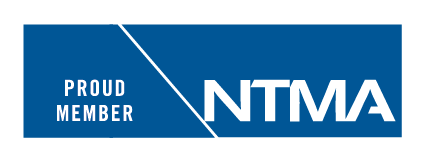Pneumatic Valve Selection
How to Select the Right Pneumatic Valve for Your System
Pneumatic valves are likely the last component to be specified in a pneumatic system. To establish valve specifications, the desired application parameters such as load/force, speed, & special application needs will have likely already resulted in cylinder(s) sizing and selection downstream of the valves. The condition of the compressed air & the cylinder selection will have largely driven the air prep selection that is placed before the valve. What’s left is perhaps the most critical for performance…the control valve selection and sizing.
Customers drive the control valve specification. With a multitude of valve types available, there are a variety of functions and options to consider. While this can be quite a challenge, here are the 2 basic steps outlining valve selection. It’s not as simple as just 2 steps, of course, but considering these basics will get you within sight of the final valve specification.
Step 1: Identify Basic Pneumatic Valve Functionality
What is the number of ports needed?
Typically 3, 4, or 5 ports are available.
- A 3-port valve is a 3-way valve that can control 1 cylinder port.
- A 4 port valve is a 4-way valve that controls 2 cylinder ports with one common exhaust port. A 5th port creates individual exhaust ports.
- Threaded or push-to-connect defines the type of plumbing connection.
What is the number of valve positions needed?
Typically 2 or 3 valve ‘positions’ are specified. Each position offers a unique directional flow path.
- In a 3 position valve, there is a center or neutral state which defines how the valve operates in a power-down situation.
- One solenoid plus a spring or 2 solenoids are used to shift a 2 position solenoid valve. Two solenoids are always used to shift a 3-position solenoid valve.
What functionality should the directional control valve have?
- In a 4 or 5 port/2 position pneumatic valve, compressed air will always flow out one cylinder port while the exhaust is allowed to flow into the valve from the other cylinder port.
- In a 3 port/2 position valve, functional options are normally closed (NC) or normally opened (NO).
- In a 3 position valve, the middle or neutral position defines the valve’s functionality when power is off. Options are all ports closed, cylinder ports exhaust, or cylinder ports pressurized.
- For a visual representation of valve functionality, please click here.
Step 2: Identify Pneumatic Valve Performance and Operational Specifications
How fast do you need the valve to shift? (Response Time)
Valves can be either pilot operated or direct-acting:
- Pilot operated valves use a solenoid to open and close the path for pilot air. Pilot air is the energy source that actually shifts the valve. A pilot-operated valve is typically less expensive to buy and consumes less power, but will have a slower response time and is susceptible to the variations of air.
- Direct-acting valves will use a solenoid to shift the entire valve spool. A direct-acting valve will be more expensive to purchase and consumes more power but will offer faster response times and is not susceptible to any air variations.
How much flow is needed to support the work downstream?
Flow will be determined through a calculation that will consider aspects of the application downstream of the cylinder, including plumbing, cylinder quantity, bore size, and application speed. Once the valve flow requirements are determined, the size of the pneumatic valve can be determined by comparing it to the flow available through a particular valve at the required pressure.
What are the power and connection requirements?
Pneumatic valves will work under various power conditions. 24 VDC is the most common voltage selected. Connecting that power to the valve also includes options such as DIN connectors, hard wiring, or Molex®-type connectors.
Are there any special valve specifications or optional features needed? (Manual override, port orientation, or multiple valves in a manifold, etc.)
Answering these questions will help you determine which kind of valve you are looking for. If you need additional support, please contact your local All World Machinery Supply representative or send us an email!



